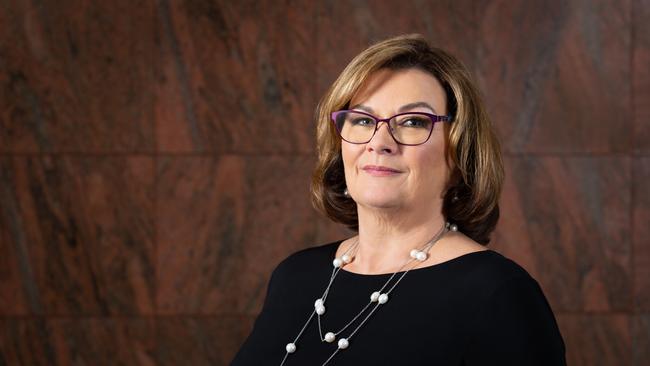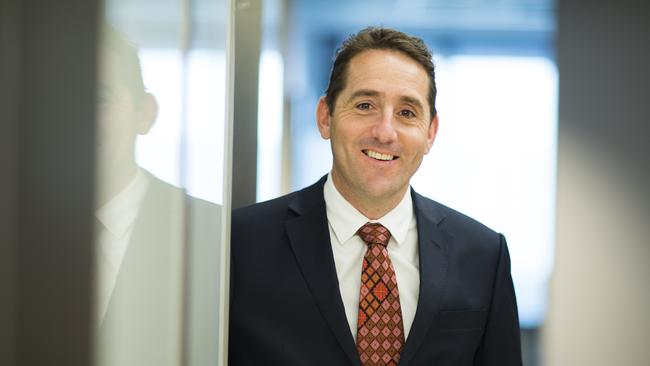Paying for a longer retirement needs super and other strategies
Superannuation does a lot of the heavy lifting, but there also are other ways to afford a comfortable and active retirement.
SA Business
Don't miss out on the headlines from SA Business. Followed categories will be added to My News.
Australians are living longer retirements but working shorter careers to pay for them, creating a financial crunch for people who do not plan ahead.
Back in 1909 when the age pension was introduced for over-65s, the average life expectancy of Australians was around 55 – meaning many people died before they had the chance to enjoy the fruits of the government retirement purse.
Today, almost 115 years later, the pension age has climbed just two years to 67 while Australians have one of the longest life expectancies in the world at 84 years – behind only Monaco and Japan – and many people are living well into their 90s.
Funding three decades in retirement is a financial challenge, but there are strategies and supports to help pay for it.
Superannuation is increasingly important. Latest figures from the Australian Bureau of Statistics show the average super balance for men is around $330,000 and for women it is near $250,000.
Super delivers tax-free retirements to a majority of Australians, while super savers have many tax incentives and investment opportunities to help grow and preserve their nest eggs.
Financial specialists urge people to make an early start to retirement saving through consistent contributions to super and other investments, and playing a long-term game that harnesses the power of compound interest.
Go for growth
JBS Financial Strategists CEO Jenny Brown said 30-year retirements would become more common as life expectancies increased thanks to medical advances.
“We have clients today in their nineties and they retired in their sixties,” she said.
“You do need to plan for 30 years of retirement.”
That means having a significant portion of growth assets, such as shares and property, in your nest egg – even after you retire.

Financial giant Vanguard analysed investment returns over the 30 years to June 2023 and found that $10,000 invested in cash in 1993 would have grown to $34,737 today.
However, if it was in Australian shares it would be $138,778, if in listed property it would be $83,326, and in international shares it would be $87,584. US shares topped Vanguard’s table at $176,155 – an average 10 per cent annual return compared with cash’s 4.2 per cent.
“You are investing for the rest of your life when you retire – don’t put it all in cash,” Ms Brown said.
“You tend to spend more in the first half than the second half, because generally speaking we are fitter and healthier and there is more desire to travel or build a lifestyle.”
Longer retirements required a longer savings time frame, Ms Brown said.
“Put money away into super and investments early, because compound interest works wonders.”
There are free compound interest calculators available to use online, while Moneysmart.gov.au has a retirement planner calculator that allows you to discover how much money you will have to spend in retirement, and work out different saving scenarios.
Avoid investment paralysis
Ms Brown said the cost of retirement would depend on your goals and plans for life after work, and it was important to avoid “kneejerk” reactions to sudden moves in financial markets both before and during retirement.
She said a balanced portfolio of investments inside and outside super could continue to grow and deliver income.
“Quality blue chip companies will give you dividends, and investment properties will give you rents – have a broad investment portfolio.”
Ms Brown said some retirees suffered from “investment paralysis” amid worries they would run out of funds.
“They think this is all the money I’m ever going to have,” she said.
Growth investments prevent cash erosion, while investing only in bank deposits is often the biggest threat to retirees’ future wealth.
“Inflation eats away at cash, so you don’t need to be ultraconservative – a diversified portfolio means not putting all your eggs in one basket.”
Shaw and Partners senior investment adviser Jed Richards said there were psychological barriers to spending money in retirement.
Don’t fear spending
He said people spent decades saving money while working, “then when they retire they’re supposed to flip a switch and spend”.
“But they don’t want to see a decline in value.
“Don’t be afraid to spend in the initial period – when you are retired you need a lot more money in the first 15 years than the second 15 years.”
Early inheritances could help avoid family conflicts between children later, Mr Richards said.
“Hand some of it out early to the family so you can see them enjoy it when they need it,” he said.
When investing in shares, consider broadening your thinking.
Mr Richards said many seniors focused purely on stocks paying higher dividends, but this often meant they missed out on growth opportunities.

“We focus on total shareholder returns, and have technology at our fingertips to organise the cash flow the client needs.” Investors could simply sell down some of their stocks to pay for their lifestyle, Mr Richards said.
“So many people in retirement have avoided CSL because it didn’t have much of a dividend yield,” he said.
“Then didn’t buy it at $30, or at $80, or at $140 and $300. Even if you love income, you should still have CSL in your portfolio.”
Mr Richards said in past decades people would work for up to 45 years, retire then die 15-20 years later.
Now, after high school, gap years and university, working lives were shorter, he said.
“Our children are working 35 years to fund 30 years of retirement, whereas grandma and grandpa worked 43 years to fund 15 years of retirement.
“We need to do a lot more saving to fund our retirement.”
Super the saviour
Fortunately, superannuation does a lot of the heavy lifting, and increasingly so.
When compulsory super started in the early 1990s, it was at 3 per cent of workers’ wages. Since July this year the rate has been 11 per cent, moving in 0.5 per cent increments to 12 per cent by July 2025.
Catapult Wealth director Tony Catt said people who had worked for the last 30 years under compulsory super had seen it create “a nice nest egg”.
“It might not pay for their whole lifestyle, a hybrid of part age pension and part super can,” he said.
Mr Catt said people should not be afraid to draw down on their super, especially in the big-spending early years of retirement.
Taking out $10,000-$15,000 per year can deliver about $200 extra each week, on top of pension payments that total $532 for a single and $802 for a couple combined.
Some seniors are remaining in the workforce and benefiting from tax and pension relief.
“I find a lot of clients are happy to do part-time work a little longer,” Mr Catt said.
“A couple can make $20,000 or $30,000 a year tax free and that tops them up beautifully.”
“There is so much more flexibility with work.”

Older workers can benefit from the Seniors and Pensioners Tax Offset (SAPTO) that enables pension-age people to earn more income tax free, while the Work Bonus scheme that allows them to earn $7800 annually from employment before reducing age pension income has been temporarily expanded this calendar year to $11,800 – more than $225 a week.
Back on the job
Some retirees have returned to work, with aged care provider My Care Solution reporting that a majority of its workforce is over 55 and some have come out of retirement this year to benefit from the 21.6 per cent wage increase for aged care workers since July 1.
“Based on this recent wage increase, the industry looks more attractive than before, allowing caregivers to take home more money for less hours when compared to other workforces, breaking the myth that coming out of retirement will require a big commitment of time,” My Care Solution executive director Mark McBriarty said.
Mr Catt said seniors with lower super balances should keep an eye on how their nest egg was tracking. “You don’t want to get backed into a corner with aged care or health issues,” he said.
“If you have to change spending patterns a bit, that’s a function of managing retirement.”
While the age pension could provide much-needed cashflow, and is indexed to inflation twice-yearly, Mr Catt said the amount it paid was “pretty skinny”.
“In this day and age with the cost of living, it’s not very good,” he said.
Moneysmart.gov.au says people can get more information about saving and retirement spending from:
• Free budgeting calculators.
• The Association of Superannuation Funds of Australia’s ASFA Retirement Standard, which provides weekly budgets for comfortable and modest retirements.
• Super Consumers Australia’s retirement savings target estimators.
• Their super fund or a financial adviser.
Originally published as Paying for a longer retirement needs super and other strategies





